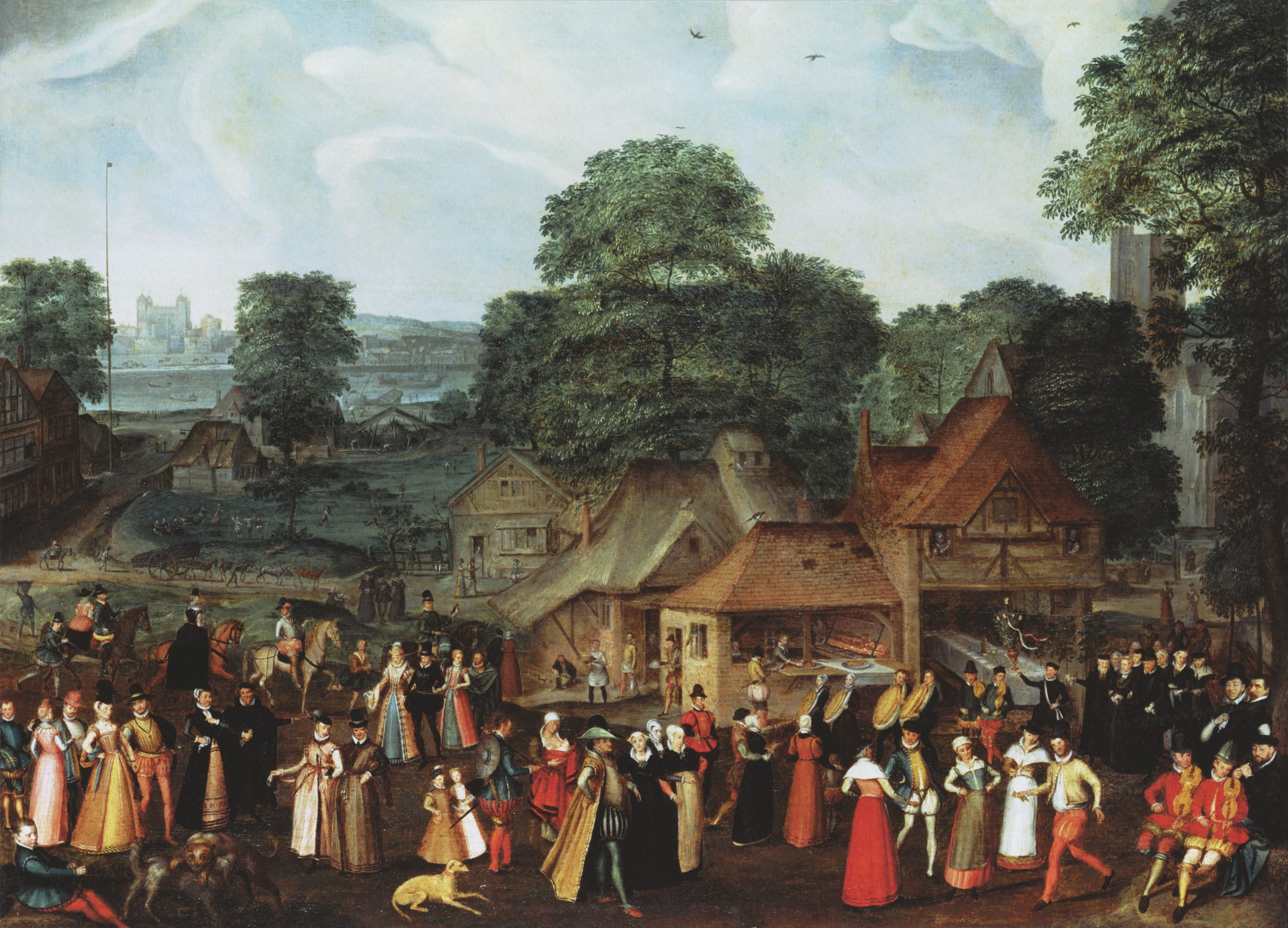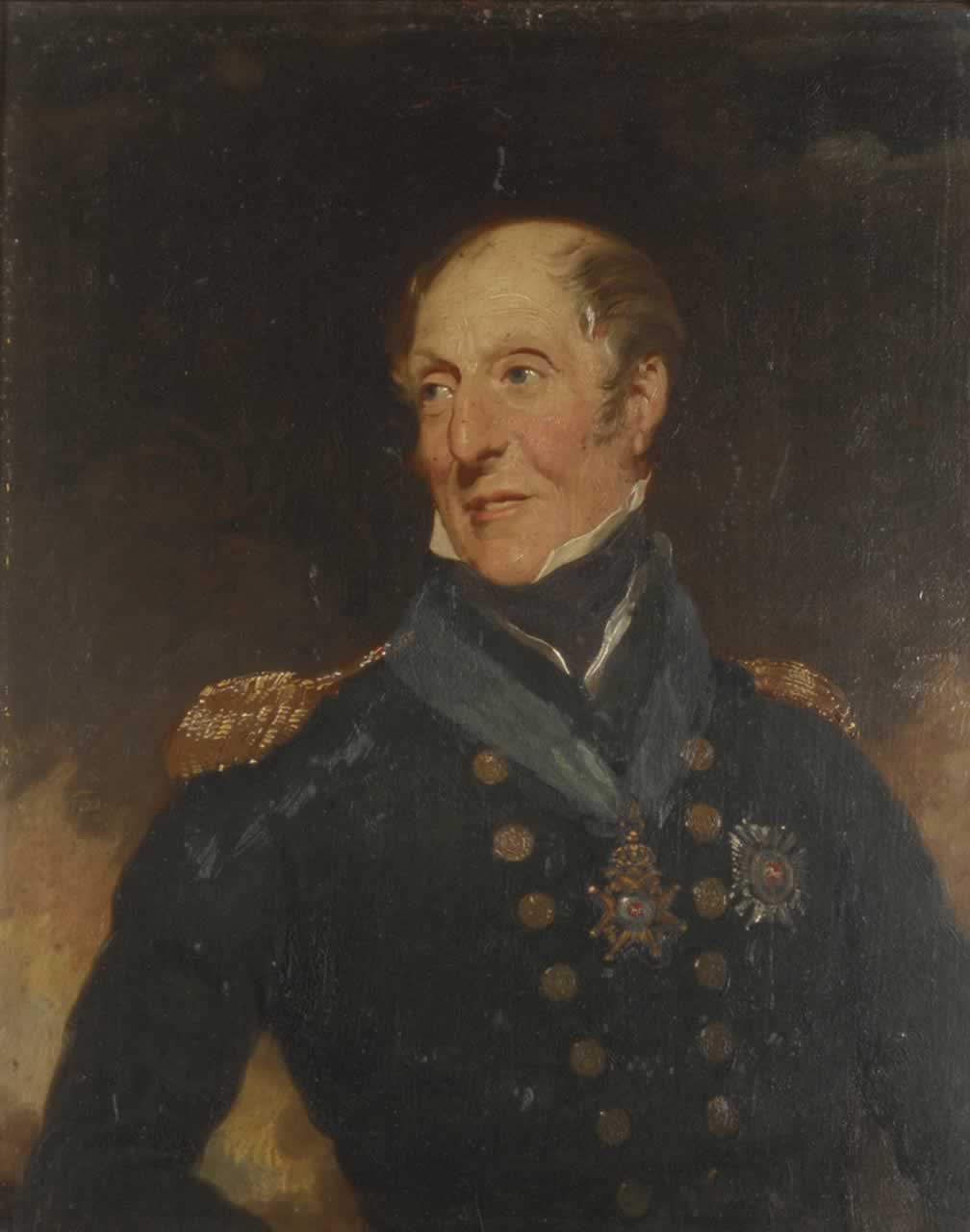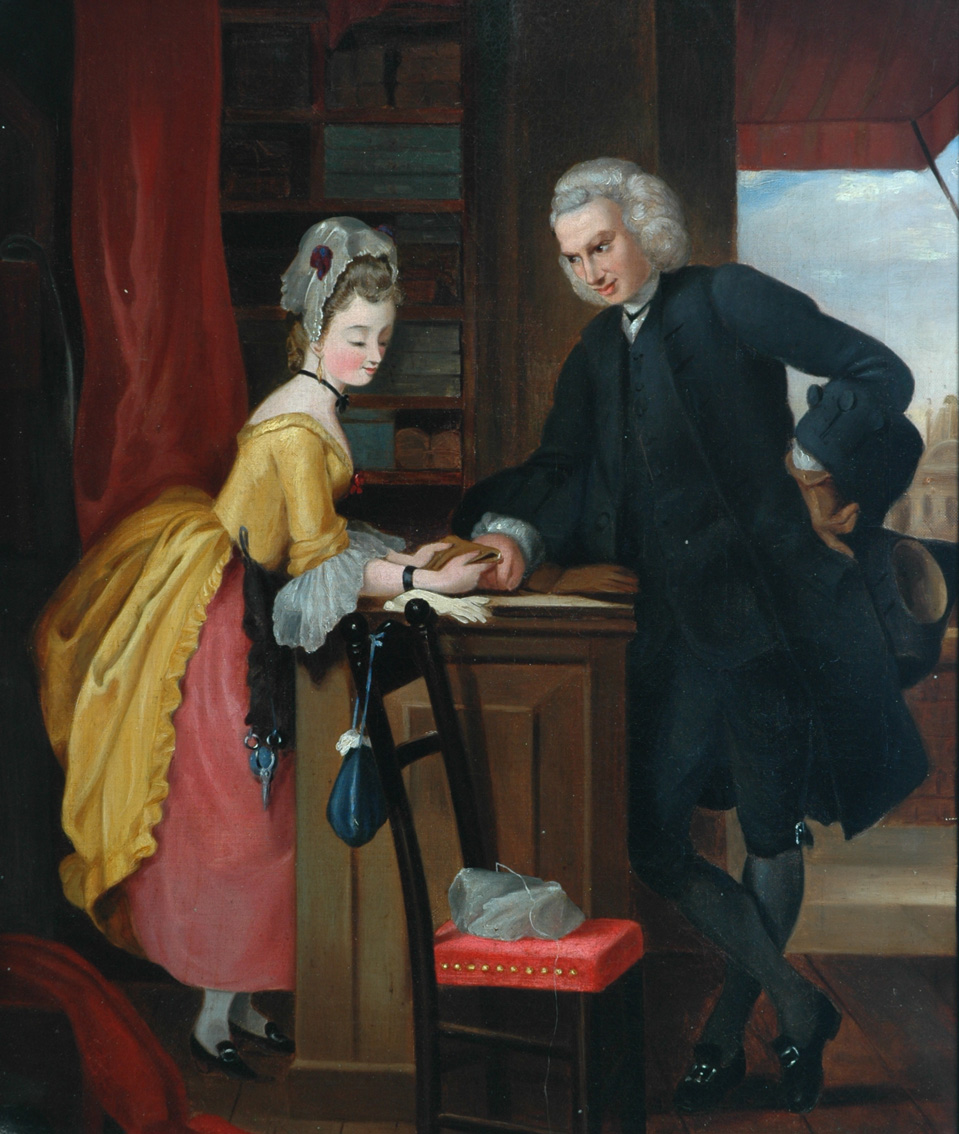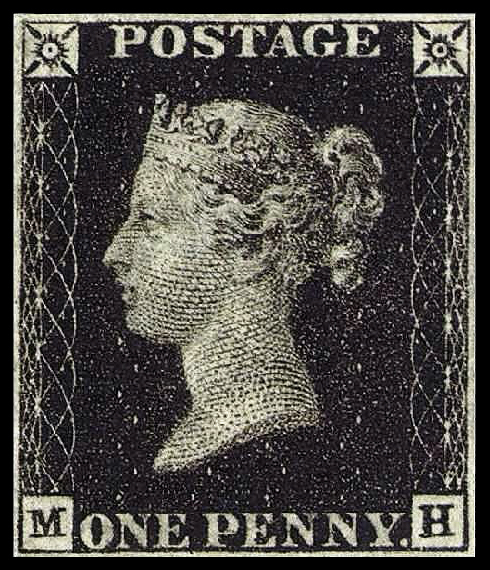|
Charles Rolls (engraver)
Charles Rolls (2 June 1799 – 9 November 1885) was a British engraver of mainly historical and figurative artworks. In a long career he created engravings from paintings by many notable 19th century artists. Biography Rolls was born on 2 June 1799 in Grange Road, Bermondsey, London (then in Surrey) to non-conformist parents, William and Mary Rolls. Early in his career, in 1923, he was proposed for the Artists' Annuity and Benevolent Fund, one of his sponsors being the engraver Francis Engleheart. Most of Rolls work was for book-illustrations and he also worked for J S Virtue & Co, the publisher of ''The Art Journal''. The celebrated engravers William Turner Davey and Lumb Stocks were both apprenticed to Rolls, Stocks from 30 November 1826, with a ‘consideration’ of £315, paid by his father.Hunnisett, B. (23 September 2004). Stocks, Lumb (1812–1892), engraver. Oxford Dictionary of National Biography. Retrieved 26 Mar. 2021, from https://www.oxforddnb.com/vie ... [...More Info...] [...Related Items...] OR: [Wikipedia] [Google] [Baidu] |
Bermondsey
Bermondsey () is a district in southeast London, part of the London Borough of Southwark, England, southeast of Charing Cross. To the west of Bermondsey lies Southwark, to the east Rotherhithe and Deptford, to the south Walworth and Peckham, and to the north is Wapping across the River Thames. It lies within the historic county boundaries of Surrey. History Toponymy Bermondsey may be understood to mean ''Beornmund''s island; but, while ''Beornmund'' represents an Old English personal name, identifying an individual once associated with the place, the element "-ey" represents Old English ''eg'', for "island", "piece of firm land in a fen", or simply a "place by a stream or river". Thus Bermondsey need not have been an island as such in the Anglo-Saxon period, and is as likely to have been a higher, drier spot in an otherwise marshy area. Though Bermondsey's earliest written appearance is in the Domesday Book of 1086, it also appears in a source which, though surviving onl ... [...More Info...] [...Related Items...] OR: [Wikipedia] [Google] [Baidu] |
Henry Thomson (painter)
Henry Thomson RA (31 July 1773 – 5 April 1843) was an English artist and Royal Academician who became Keeper of the Royal Academy. As a painter, he specialized in historical, mythological and literary subjects. He was also a translator. Life Born in Portsea, Portsmouth, Thomson was the son of a naval purser who encouraged his son's interest in art and took him to Paris in 1787. They returned to England two years later, as a result of the French Revolution. From 1791 to 1792, Thomson attended the Royal Academy Schools. He then continued to train under John Opie, before travelling again in Europe with his father. They were in Italy between 1793 and 1798, then in Austria and Germany in 1799. After his return to England later that year, Thomson's artistic career made speedy progress. In the Royal Academy exhibition of 1800 he exhibited paintings of classical subjects. The following year he was elected an associate member of the Academy and in 1804 an Academician. [...More Info...] [...Related Items...] OR: [Wikipedia] [Google] [Baidu] |
British Engravers
British may refer to: Peoples, culture, and language * British people, nationals or natives of the United Kingdom, British Overseas Territories, and Crown Dependencies. ** Britishness, the British identity and common culture * British English, the English language as spoken and written in the United Kingdom or, more broadly, throughout the British Isles * Celtic Britons, an ancient ethno-linguistic group * Brittonic languages, a branch of the Insular Celtic language family (formerly called British) ** Common Brittonic, an ancient language Other uses *'' Brit(ish)'', a 2018 memoir by Afua Hirsch *People or things associated with: ** Great Britain, an island ** United Kingdom, a sovereign state ** Kingdom of Great Britain (1707–1800) ** United Kingdom of Great Britain and Ireland (1801–1922) See also * Terminology of the British Isles * Alternative names for the British * English (other) * Britannic (other) * British Isles * Brit (other) * Briton ( ... [...More Info...] [...Related Items...] OR: [Wikipedia] [Google] [Baidu] |
People From Bermondsey
A person ( : people) is a being that has certain capacities or attributes such as reason, morality, consciousness or self-consciousness, and being a part of a culturally established form of social relations such as kinship, ownership of property, or legal responsibility. The defining features of personhood and, consequently, what makes a person count as a person, differ widely among cultures and contexts. In addition to the question of personhood, of what makes a being count as a person to begin with, there are further questions about personal identity and self: both about what makes any particular person that particular person instead of another, and about what makes a person at one time the same person as they were or will be at another time despite any intervening changes. The plural form "people" is often used to refer to an entire nation or ethnic group (as in "a people"), and this was the original meaning of the word; it subsequently acquired its use as a plural form of pe ... [...More Info...] [...Related Items...] OR: [Wikipedia] [Google] [Baidu] |
1885 Deaths
Events January–March * January 3– 4 – Sino-French War – Battle of Núi Bop: French troops under General Oscar de Négrier defeat a numerically superior Qing Chinese force, in northern Vietnam. * January 4 – The first successful appendectomy is performed by Dr. William W. Grant, on Mary Gartside. * January 17 – Mahdist War in Sudan – Battle of Abu Klea: British troops defeat Mahdist forces. * January 20 – American inventor LaMarcus Adna Thompson patents a roller coaster. * January 24 – Irish rebels damage Westminster Hall and the Tower of London with dynamite. * January 26 – Mahdist War in Sudan: Troops loyal to Mahdi Muhammad Ahmad conquer Khartoum; British commander Charles George Gordon is killed. * February 5 – King Leopold II of Belgium establishes the Congo Free State, as a personal possession. * February 9 – The first Japanese arrive in Hawaii. * February 16 – Charles Dow pu ... [...More Info...] [...Related Items...] OR: [Wikipedia] [Google] [Baidu] |
1799 Births
Events January–June * January 9 – British Prime Minister William Pitt the Younger introduces an income tax of two shillings to the pound, to raise funds for Great Britain's war effort in the French Revolutionary Wars. * January 17 – Maltese patriot Dun Mikiel Xerri, along with a number of other patriots, is executed. * January 21 – The Parthenopean Republic is established in Naples by French General Jean Étienne Championnet; King Ferdinand I of the Two Sicilies flees. * February 9 – Quasi-War: In the single-ship action of USS ''Constellation'' vs ''L'Insurgente'' in the Caribbean, the American ship is the victor. * February 28 – French Revolutionary Wars: Action of 28 February 1799 – British Royal Navy frigate HMS ''Sybille'' defeats the French frigate ''Forte'', off the mouth of the Hooghly River in the Bay of Bengal, but both captains are killed. * March 1 – Federalist James Ross becomes President pro tempore of the United States Sen ... [...More Info...] [...Related Items...] OR: [Wikipedia] [Google] [Baidu] |
Henry Wyatt (artist)
Henry Wyatt (17 September 1794 – 27 February 1840), was an English portrait, subject and genre painter. Life and work Wyatt was born at Thickbroom, near Lichfield, Staffordshire on 17 September 1794. On the death of his father, when he was only three years old, he went to live at Birmingham with his guardian, Francis Eginton, the well-known glass-painter, who, finding he had an aptitude for art, sent him to London in 1811, and in the following year he was admitted to the school of the Royal Academy. In 1815, he entered the studio of Sir Thomas Lawrence as a pupil. At the end of 1817, he established himself as a portrait-painter, practising first at Birmingham and successively at Liverpool, and Manchester, also painting occasional subject pictures. In 1825, he settled in London, where he resided in Newman Street until 1834, when ill-health obliged him to move to Leamington. It was his intention to return to London in 1837, but having some portrait commissions in Ma ... [...More Info...] [...Related Items...] OR: [Wikipedia] [Google] [Baidu] |
Felicia Hemans
Felicia Dorothea Hemans (25 September 1793 – 16 May 1835) was an English poet (who identified as Welsh by adoption). Two of her opening lines, "The boy stood on the burning deck" and "The stately homes of England", have acquired classic status. Early life and education Felicia Dorothea Browne was the daughter of George Browne, who worked for his father-in-law's wine importing business and succeeded him as Tuscan and imperial consul in Liverpool, and Felicity, daughter of Benedict Paul Wagner (1718–1806), wine importer at 9 Wolstenholme Square, Liverpool and Venetian consul for that city. Hemans was the fourth of six children (three boys and three girls) to survive infancy. Her sister Harriett collaborated musically with Hemans and later edited her complete works (7 vols. with memoir, 1839). George Browne's business soon brought the family to Denbighshire in North Wales, where she spent her youth. They lived in a cottage within the grounds of Gwrych Castle near Abergele wh ... [...More Info...] [...Related Items...] OR: [Wikipedia] [Google] [Baidu] |
A Poem Of Felicia Hemans In The Literary Souvenir, 1833/On A Picture Representing An Italian Contadina And Her Family
A, or a, is the first letter and the first vowel of the Latin alphabet, used in the modern English alphabet, the alphabets of other western European languages and others worldwide. Its name in English is ''a'' (pronounced ), plural ''aes''. It is similar in shape to the Ancient Greek letter alpha, from which it derives. The uppercase version consists of the two slanting sides of a triangle, crossed in the middle by a horizontal bar. The lowercase version can be written in two forms: the double-storey a and single-storey ɑ. The latter is commonly used in handwriting and fonts based on it, especially fonts intended to be read by children, and is also found in italic type. In English grammar, " a", and its variant " an", are indefinite articles. History The earliest certain ancestor of "A" is aleph (also written 'aleph), the first letter of the Phoenician alphabet, which consisted entirely of consonants (for that reason, it is also called an abjad to distinguish it fro ... [...More Info...] [...Related Items...] OR: [Wikipedia] [Google] [Baidu] |
Gilbert Stuart Newton
Gilbert Stuart Newton (2 September 1795 – 5 August 1835) was a British artist. Life Newton was born in Halifax, Nova Scotia, the twelfth child and youngest son of Henry Newton, a customs official, and Ann, his wife, daughter of Gilbert Stuart, snuff manufacturer at Boston, Massachusetts, of Scottish descent, and sister to Gilbert Stuart the portrait painter. His parents left Boston in 1776 as the British withdrew; but on the death of his father in 1803 his mother returned with her family to Charlestown, near Boston. Newton was intended for a commercial career, but was taken on as a pupil by his uncle, Gilbert Stuart. Newton came to Europe with an elder brother, and studied painting at Florence. In 1817 he visited Paris on his way to England and there met Charles Robert Leslie, as well as Washington Allston and David Wilkie. After visiting the Netherlands Newton went with Leslie to London, and entered as a student at the Royal Academy. He revisited America for a short ... [...More Info...] [...Related Items...] OR: [Wikipedia] [Google] [Baidu] |
Henry Howard (artist)
Henry Howard RA (31 January 1769 – 5 October 1847) was an early 19th-century British portrait and history painter. Biography He was born in London and after being educated at a school in Hounslow, he started studying with the painter Philip Reinagle in 1786. In 1788 he began attending the Royal Academy Schools and was awarded a silver medal for drawing from life and a gold medal for historical painting for his ''Caractacus Recognising the Dead Body of his Son''.Graves and Graham-Vernon, “Henry Howard”. In March 1791, Howard traveled to Italy, France, and Switzerland. In Rome, he met and studied sculpture with John Flaxman and John Deare. In 1792 he painted a ''Dream of Cain''. While abroad he applied to the Royal Academy for a grant after the bankruptcy of his father. Two years later, he returned to Britain by way of Vienna and Dresden. He began instructing Reinagle's daughter Jane in drawing and married her in 1803. Together they had four daughters and three ... [...More Info...] [...Related Items...] OR: [Wikipedia] [Google] [Baidu] |
Henry Corbould
Henry Corbould (1787–1844) was an English artist. Life The third son of Richard Corbould, he was born in London. He studied painting with his father, and was at an early age admitted as a student of the Royal Academy, under Fuseli, where he gained the silver medal for a study from the life. While at the Academy he made the friendship of Flaxman, Stothard, West, Chantrey, and Westmacott. He several times sat as a model to West in whose picture of 'Christ Rejected' his head was painted for that of St. John; as also in that of 'Christ Healing the Sick in the Temple,' in the National Gallery. In 1808 he exhibited a painting of 'Coriolanus'; in the following year 'The Parting of Hector and Andromache,' and 'Thetis comforting Achilles,' &c.; but his name has been comparatively little before the public except as a designer for books, his time having been almost entirely occupied in making drawings from ancient marbles in the possession of various English noblemen. Those of the ... [...More Info...] [...Related Items...] OR: [Wikipedia] [Google] [Baidu] |


.png)
_1938.jpg)






